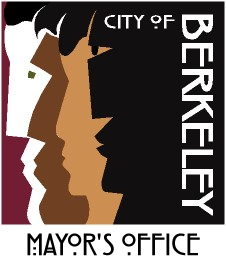Berkeley City Council Unanimously Moves Forward with Elimination of Single Family Zoning
BERKELEY CITY COUNCIL UNANIMOUSLY MOVES FORWARD WITH ELIMINATION OF SINGLE FAMILY ZONING
Last night’s unanimous vote will initiate a public process to reform city zoning to meet state housing requirements and set a national example for the future of urban housing policy
March 26, 2021
BERKELEY–Last night, the Berkeley City Council voted unanimously to launch an 18-month public process to update the city’s General Plan, becoming one of the first Bay Area cities to take early action as required by the state’s Regional Housing Needs Allocation. The vote paves the way for new housing throughout the city, including eliminating single family zoning. The Council meeting, which brought out over 250 residents expressing pro-housing and pro-neighborhood views, ultimately united around a common approach to plan for new housing in the city. The Council’s action forwarded specific zoning proposals, along with recommending anti-displacement and tenant protection strategies. Berkeley will have to plan for 9,000 new units to meet state mandates.
“This vote marks the beginning of an 18-month process that will allow for vigorous public engagement with the goal of developing zoning changes to address our housing affordability crisis,” said Mayor Jesse Arreguin. “The lead-up to this vote was certainly contentious, but by working together we can create a sense of unity that is needed to advance our progressive values that makes Berkeley the community that we all love to live in”.
Since 1969, state law requires that California’s Department of Housing and Community Development undergo a Regional Housing Needs Allocation (RHNA) process to plan for and address statewide housing demand. Last year the state mandated that the San Francisco Bay Area plan for 441,176 new housing units between 2022-2030., he Association of Bay Area Governments (ABAG), which Mayor Arreguin chairs, then divvies up those units across jurisdictions in the Bay Area, with Berkeley required to develop 8,934 new homes across different levels of income in this timeframe.
Two separate items were advanced last night. The first, sponsored by Mayor Arreguin, Vice Mayor Lori Droste, and Councilmembers Rashi Keserwani and Terry Taplin, put forward various zoning proposals to meet state housing requirements. These include prioritizing development in Priority Development Areas and transit and commercial corridors, allowing up to four units on lots currently zoned for just one unit, incentivizing accessory dwelling units (ADUs), and maintaining the historic fabric and character of neighborhoods. The second item, sponsored by Councilmembers Sophie Hahn, Kate Harrison, Ben Bartlett, and Susan Wengraf, proposed a robust public process to update the city’s Housing Element , referring to the City Manager a series of steps to ensure that such plans are compliant with State law, addresses safety concerns such as development in the hills and other high fire hazard zones, ensure that all levels of affordability in the RHNA goals are addressed (historically below-market rate units are developed at a significantly lower rate than market rate), and promote cooperative, land-trust and other social housing concepts, as well as innovative home ownership models.
Berkeley’s efforts to end single family zoning is part of a broader housing plan to create an equitable and sustainable community. These actions include Measures O, a $135 million affordable housing bond; Measure U1, a gross receipts tax for housing development and retention; the proposed groundbreaking Tenant Opportunity to Purchase Act (TOPA); developments at the Ashby, North Berkeley BART stations and along the Adeline Corridor; upzoning; and much more. By taking these actions, Berkeley officials aim to show that by working together we can achieve the goals of ending the affordable housing crisis and homelessness epidemic, while creating a rare chance to set a national example of how a courageous city can grow sustainably and responsibly.
###
